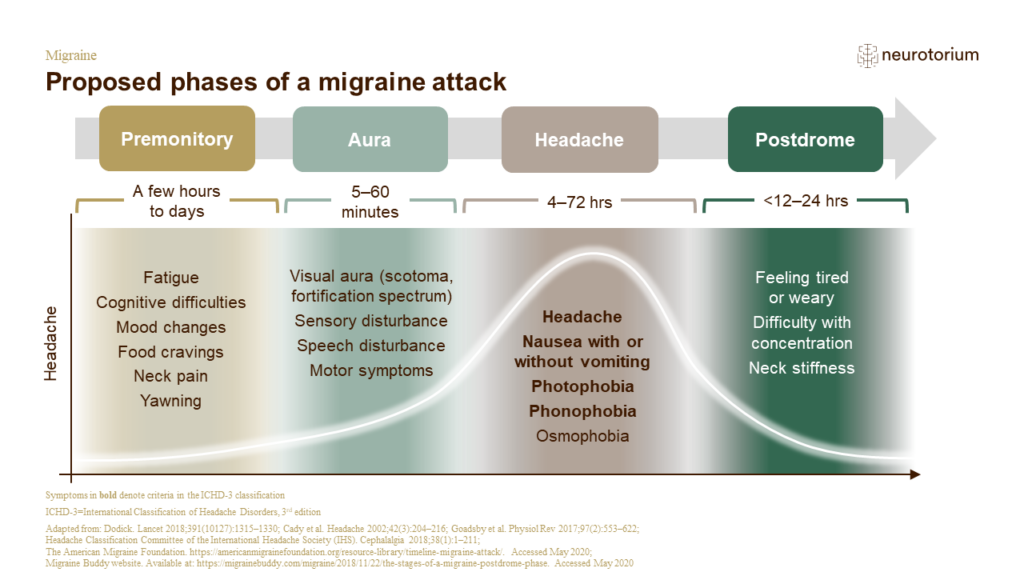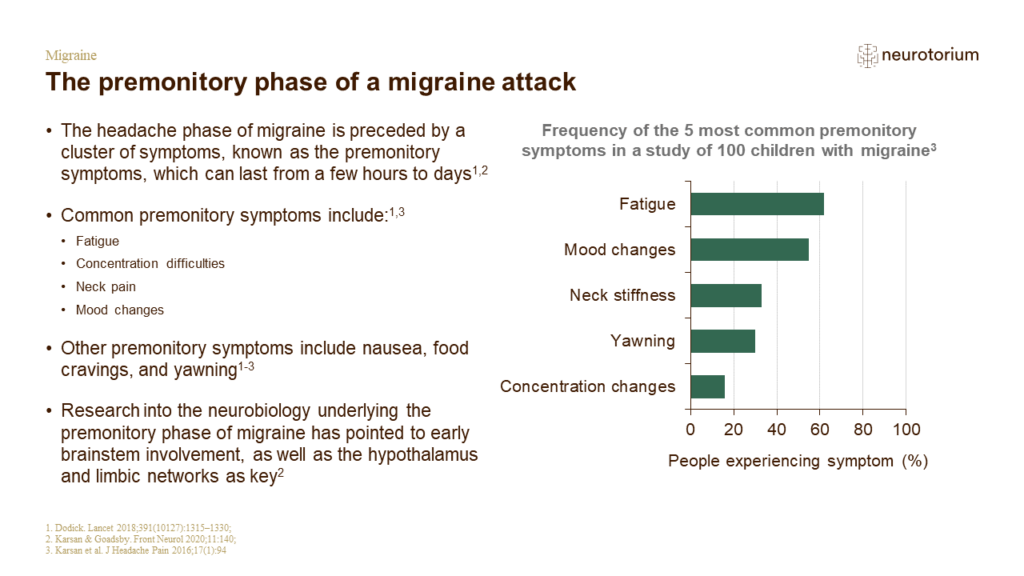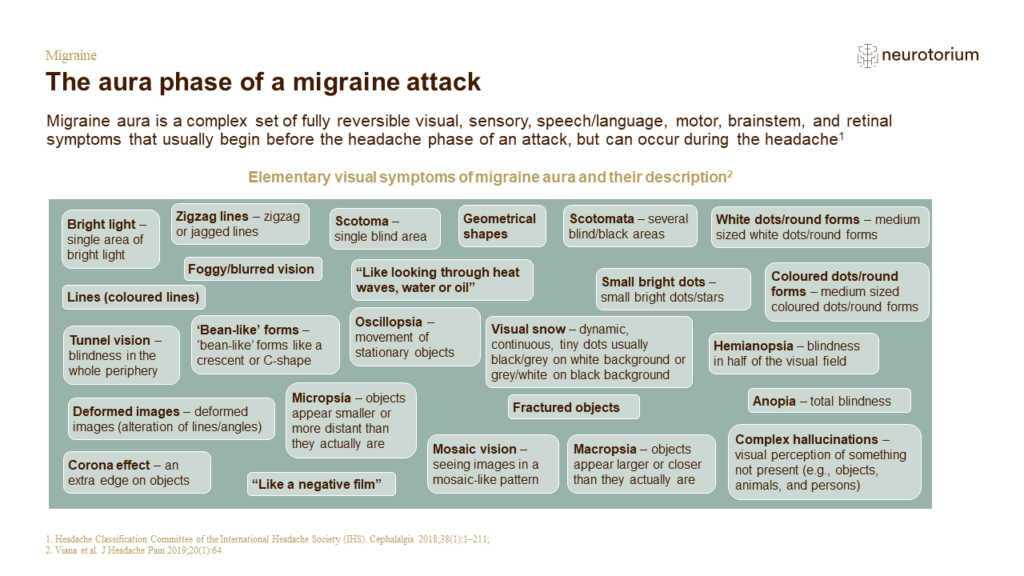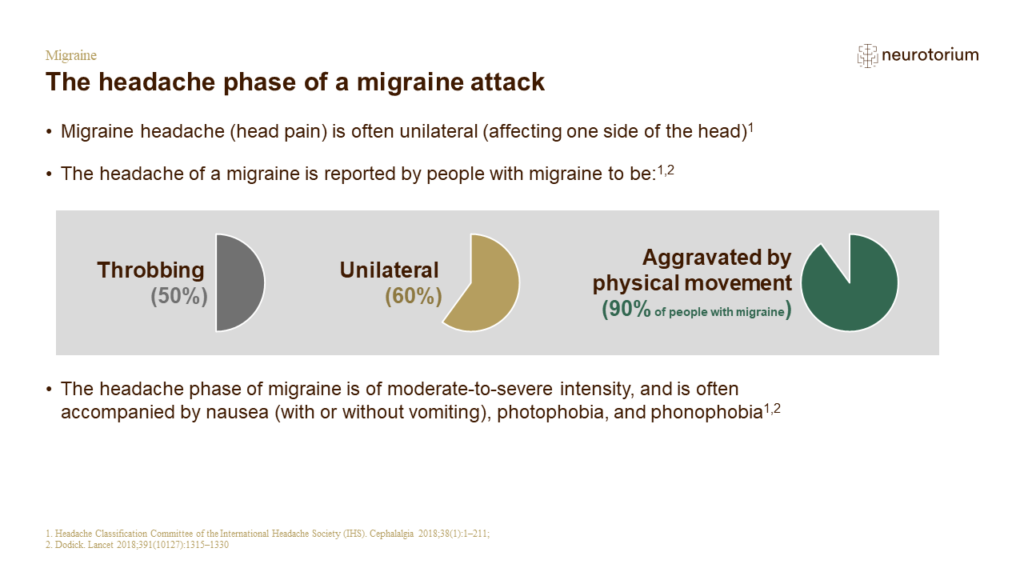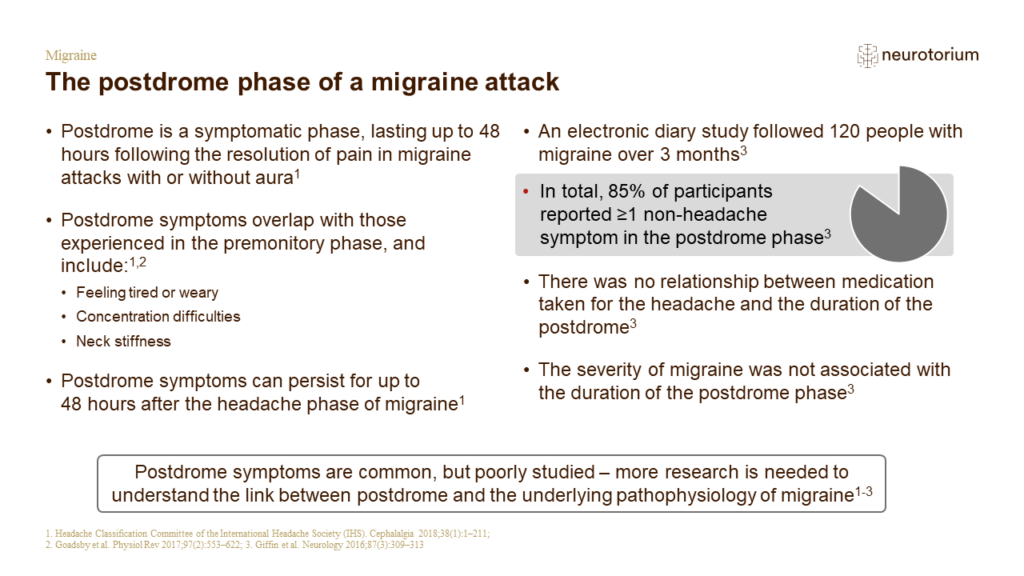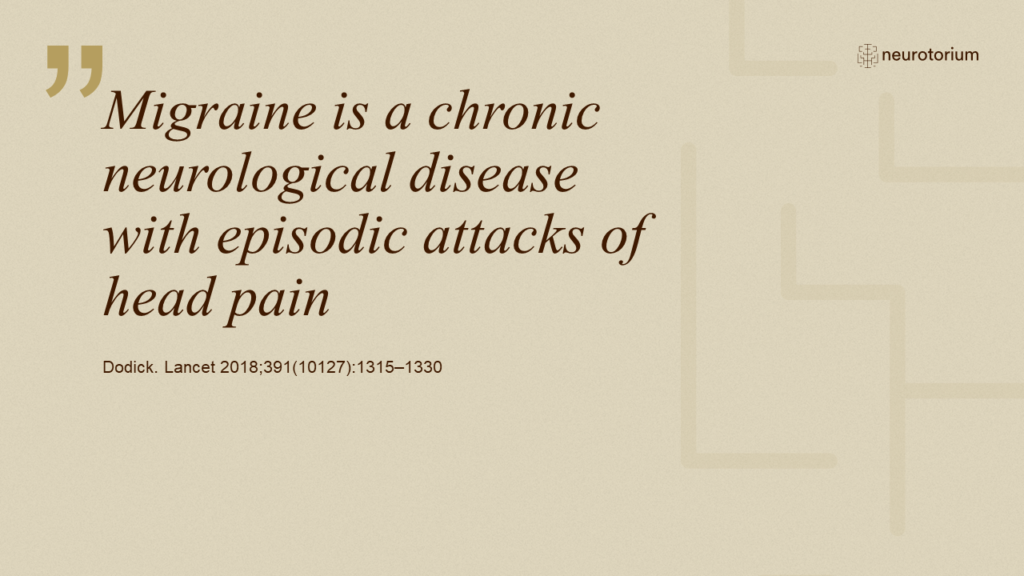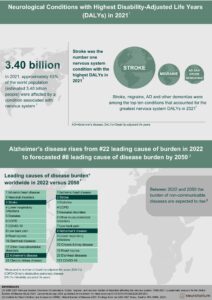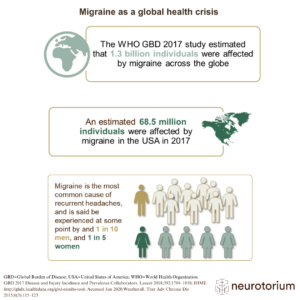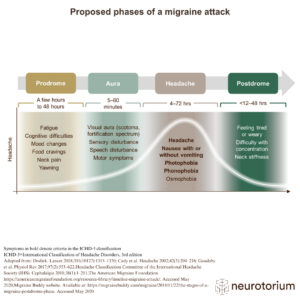Index for
slide deck
Introduction
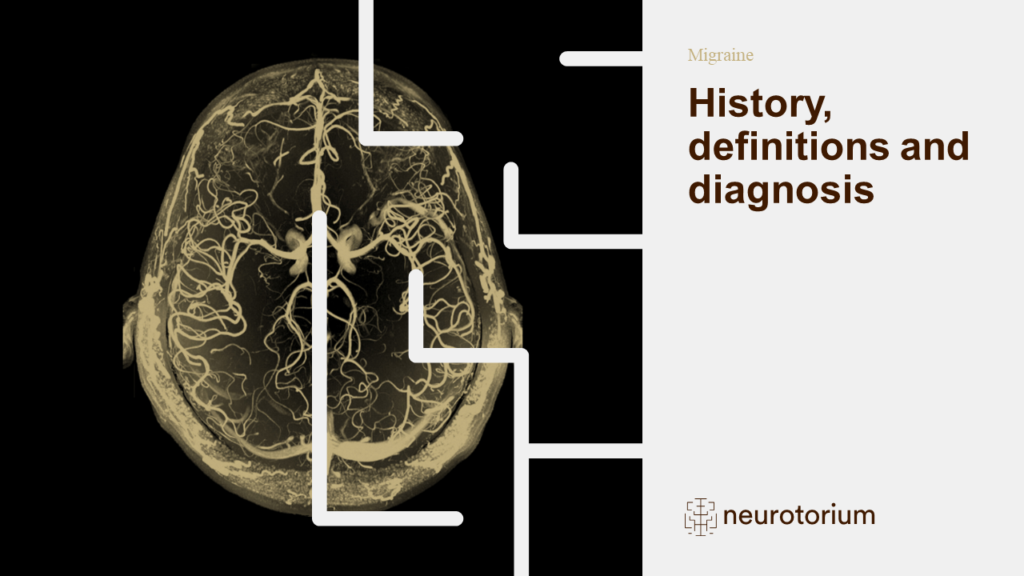
Migraine - History Definitions And Diagnosis
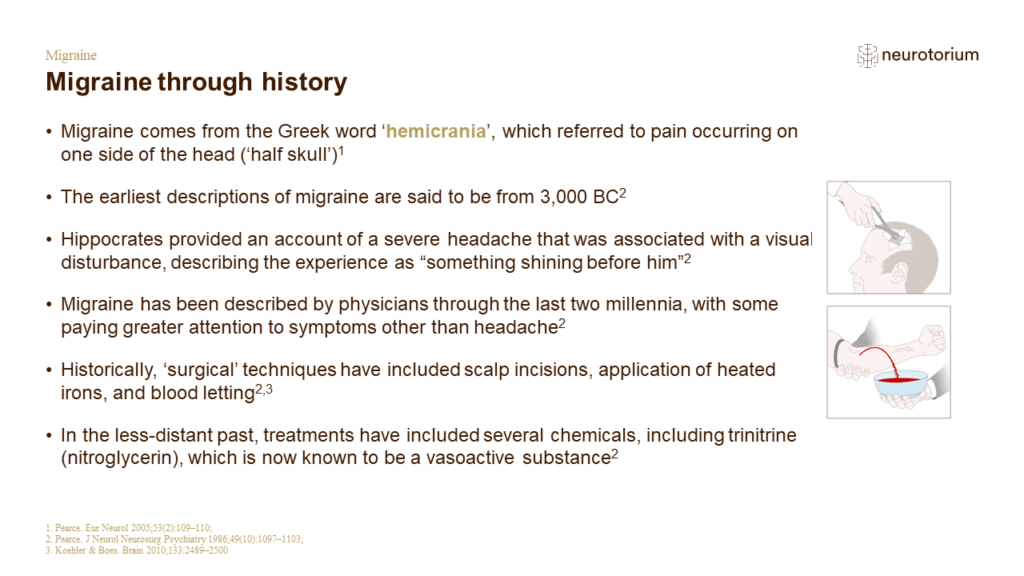
Migraine through history
It is Galen of Pergamon (AD 131–201) who is said to have first used the term ‘hemicrania’; ‘crania’ referring to the skull, and ‘hemi’, meaning half, referring to the pain on the one side of the head.[Pearce, 2005] A rival word, reflecting this similar focus on unilateral…
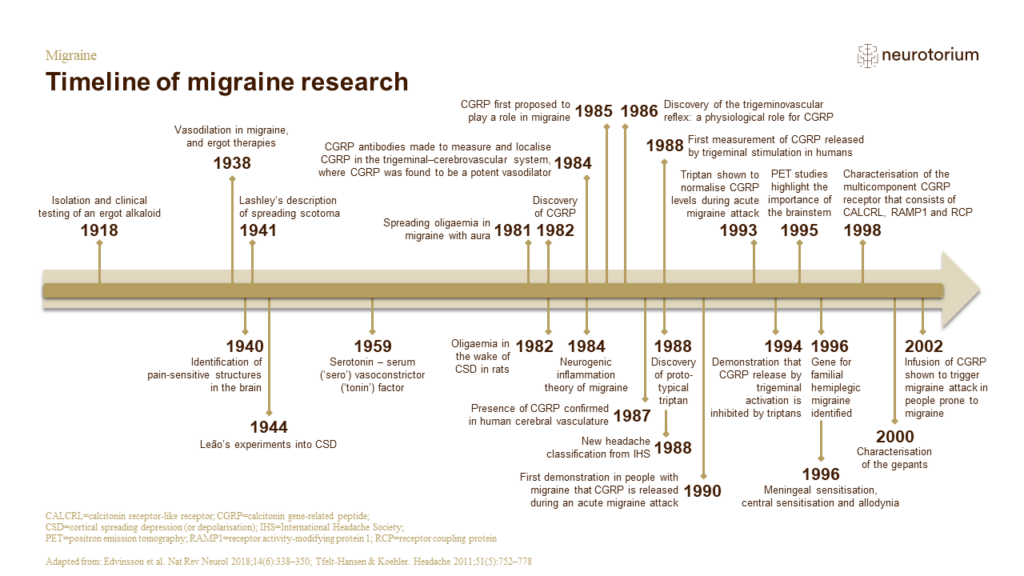
Timeline of migraine research
Over the last century, there has been much progress in understanding the pathology underlying migraine.[Tfelt-Hansen & Koehler, 2011] Key scientific and clinical milestones are detailed on the slide, including some of the key events in the development of migraine therapie…
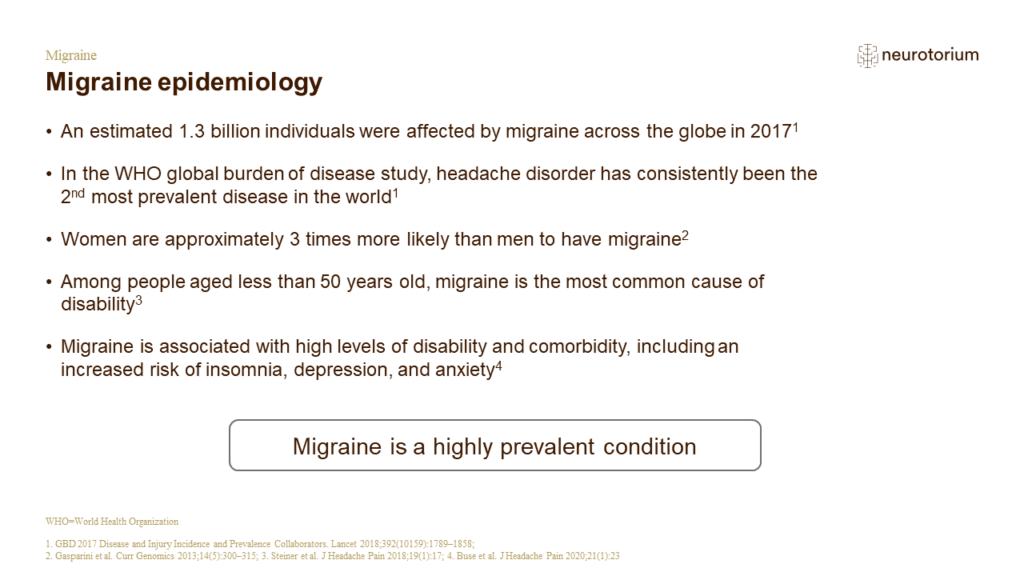
Migraine epidemiology
Migraine is a burdensome condition.[GBD, 2017; Steiner et al., 2018; Buse et al., 2020] The Migraine in America Symptoms and Treatment (MAST) study was an internet-based survey that questioned people with migraine about their headaches.[Buse et al., 2020] The results show…
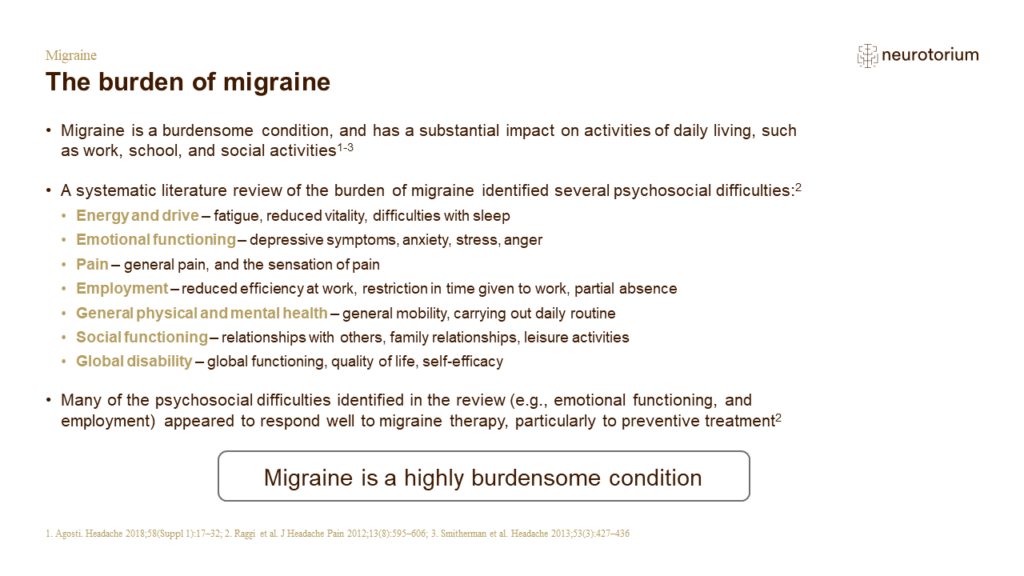
The burden of migraine
This systematic literature review incorporated information from 51 publications, and identified 34 ‘psychosocial difficulties’ associated with migraine, which were reported a total of 231 times across the included studies.[Raggi et al., 2012] These psychosocial difficulti…
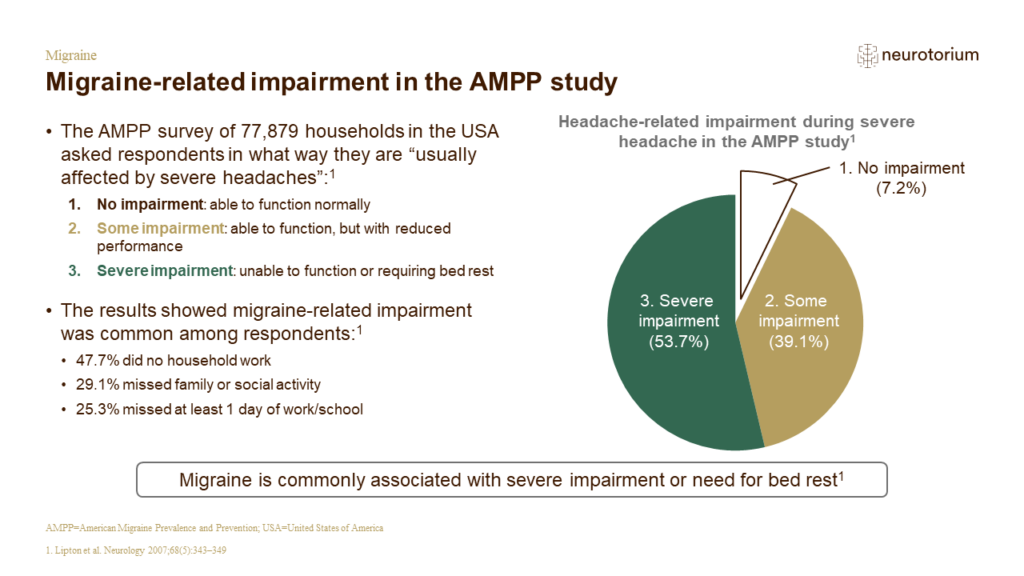
Migraine-related impairment in the AMPP study
The American Migraine Prevalence and Prevention (AMPP) study began in 2004, and involved posting questionnaires to 120,000 households in the USA, from which 77,879 responses were received.[Lipton et al., 2007; Silberstein et al., 2007; AMF website] The questionnaire inclu…
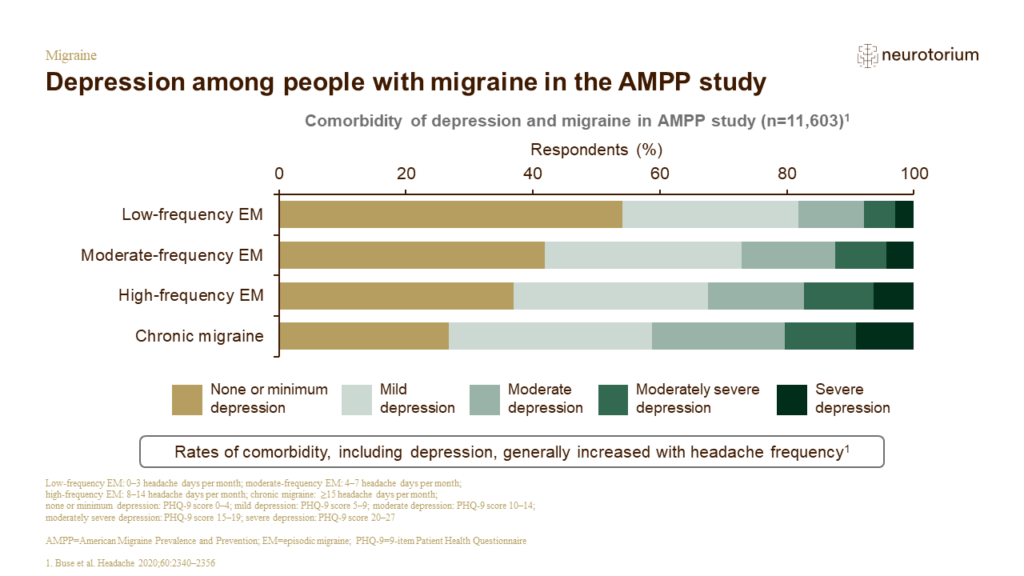
Depression among people with migraine in the AMPP study
In this study, respondents of the AMPP survey were categorised by frequency of headache attacks.[Buse et al., 2020] Of the total 11,603 eligible respondents:[Buse et al., 2020]
- 67.7% (7,860/11,603) experienced low-frequency episodic migraine (0–3 headache days per month…
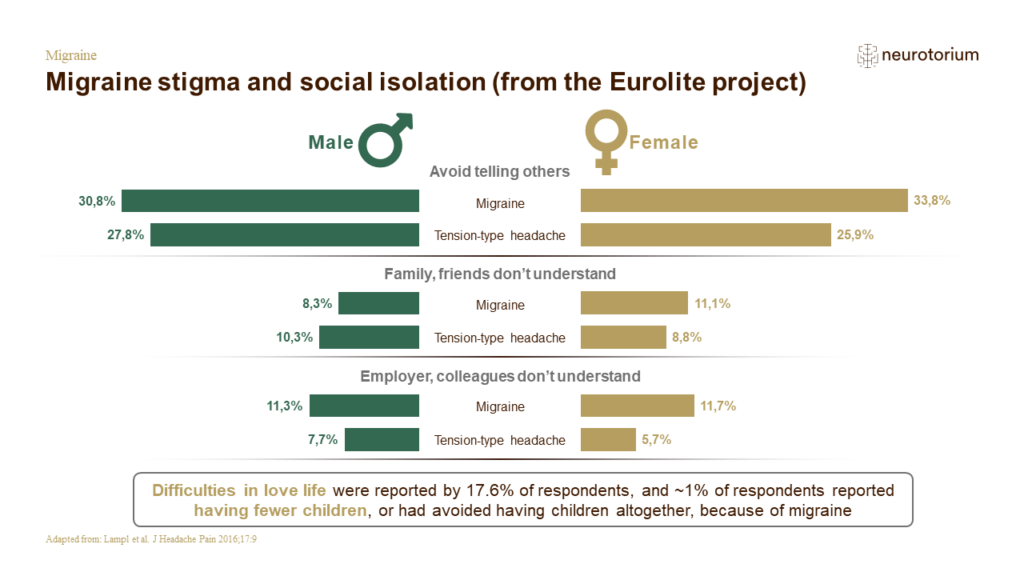
Migraine stigma and social isolation (from the Eurolite project)
The Eurolite project investigated the interictal (between attacks) burden of migraine.[Lampl et al., 2016] For people with migraine, the mean time spent in the interictal period was 317 days per year, whilst for people with tension-type headache the mean time spent in the…
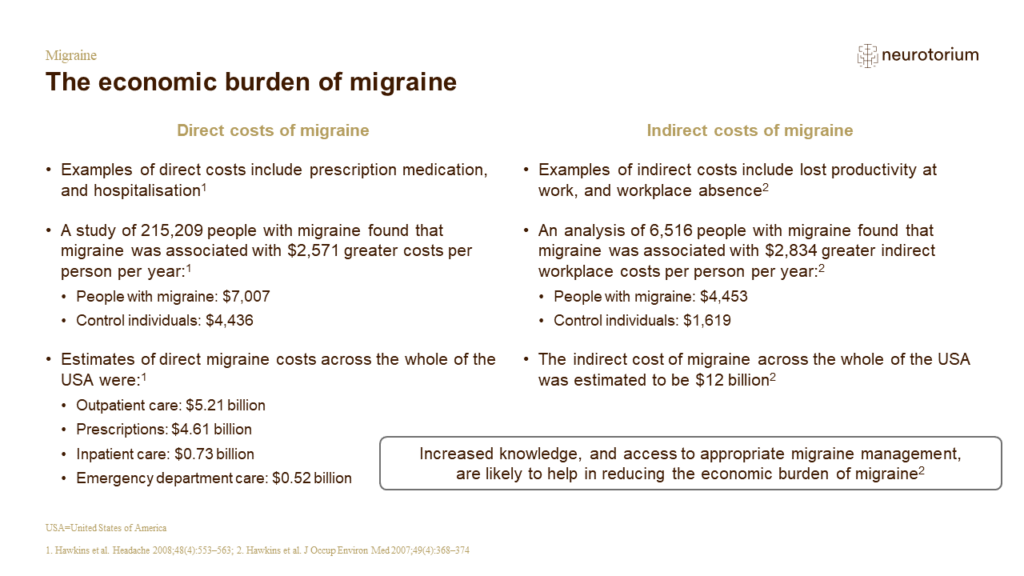
The economic burden of migraine
The economic burden of a disease or condition can be categorised into direct and indirect costs:[Phillips, 2005]
- Direct costs relate to the use of resources as a direct result of a treatment and healthcare process. Examples include drug costs, the costs of nursing, and …
Migraine criteria, diagnosis and subtypes
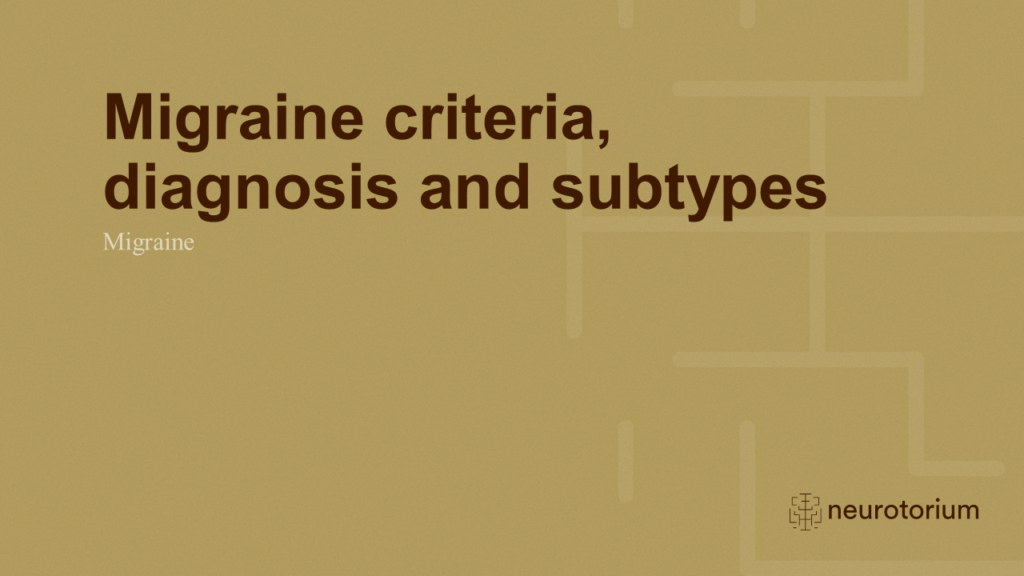
Migraine criteria, diagnosis and subtypes
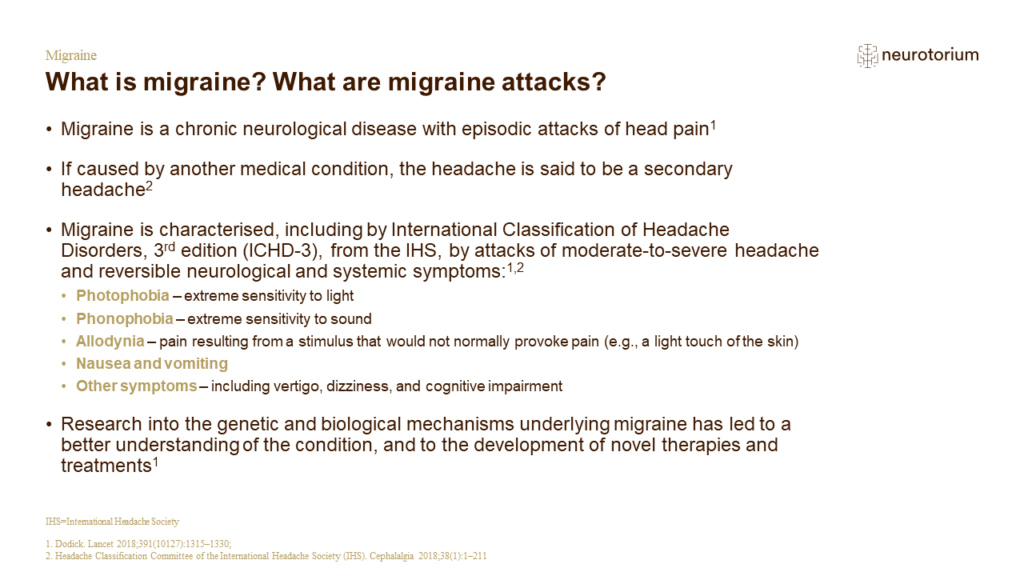
What is migraine? What are migraine attacks?
Migraine is a complex, chronic, paroxysmal (characterised by sudden recurrence, or intensification of symptoms), multiphase, neurological disease, with episodic attacks that typically include head pain and an assortment of neurological symptoms.[Dodick, 2018; IHS, 2018] A…
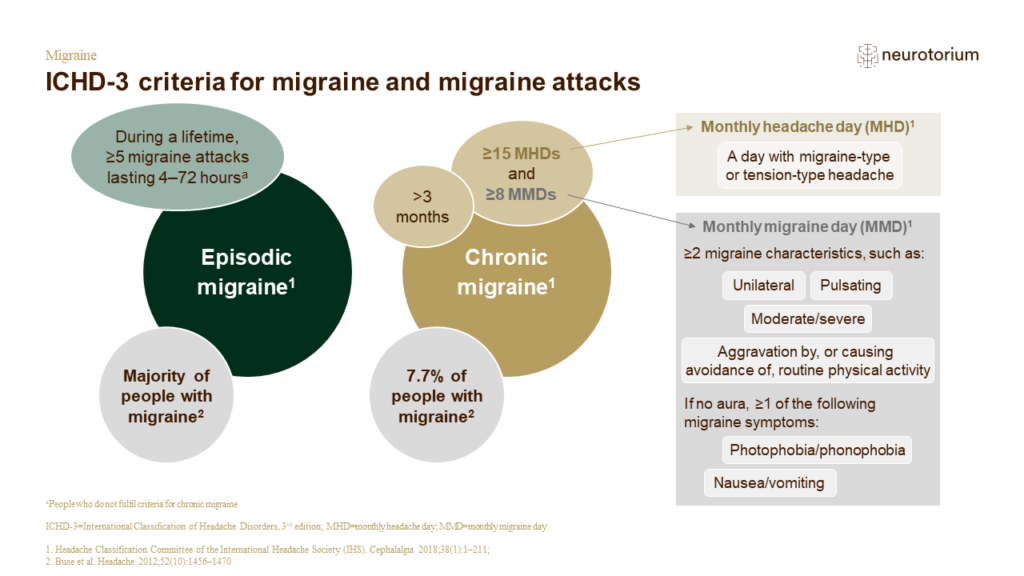
ICHD-3 criteria for migraine and migraine attacks
The International Classification of Headache Disorders, 3rd edition (ICHD-3), from the International Headache Society (IHS), provides an extensive classification of headaches, including migraine and tension-type headache.[IHS, 2018] The classification is hierarchical, so …
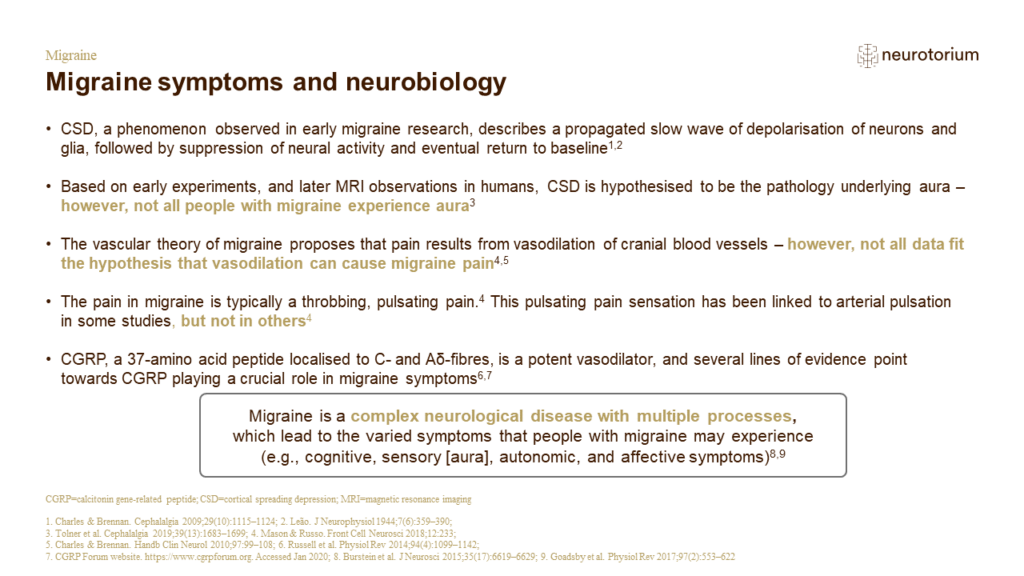
Migraine symptoms and neurobiology
Critics of cortical spreading depression (CSD) have long pointed out that, although observed in animal studies, CSD has not been consistently observed using electroencephalograms (EEG) in humans with migraine.[Charles & Brennan, 2010] Furthermore, CSD would be expected to…
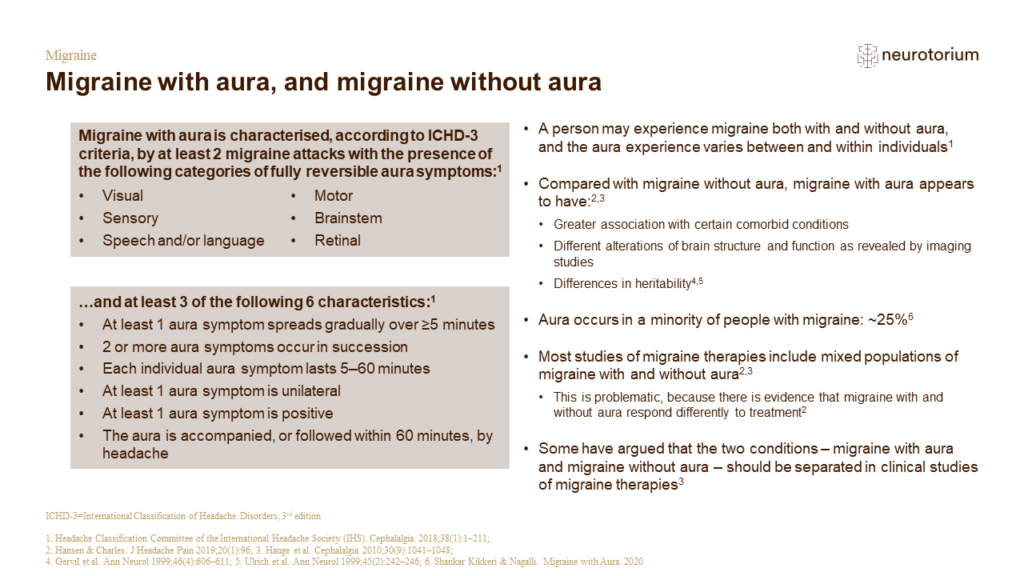
Migraine with aura, and migraine without aura
There are important differences between migraine with aura and without aura, as outlined on the slide. However – perhaps because of the lack of clinical studies stratified based on the presence of aura symptoms – it is not clear whether migraine with aura and without aura…
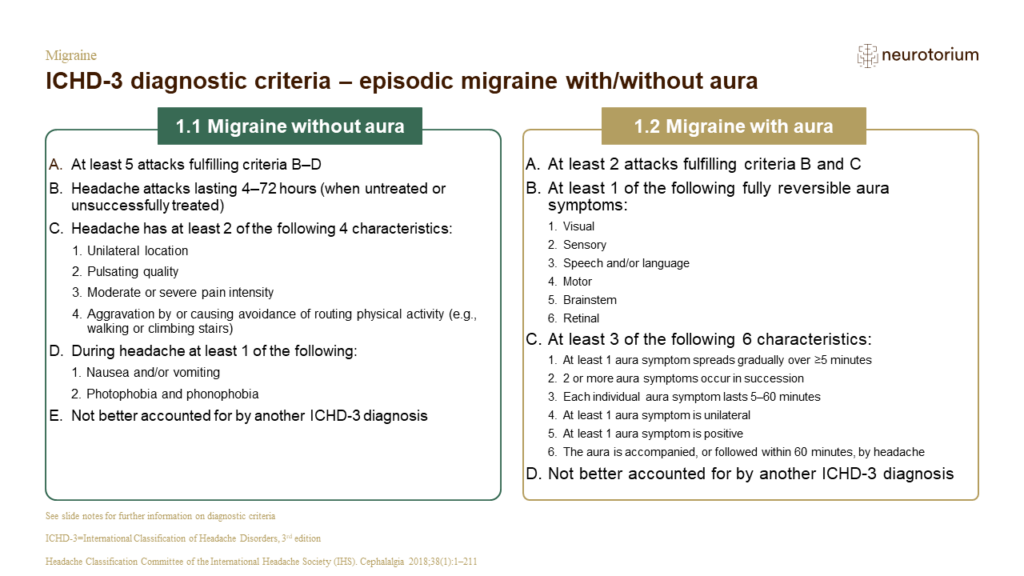
ICHD-3 diagnostic criteria – episodic migraine with/without aura
1.1 Migraine without aura[IHS, 2018]
A. At least five attacksa fulfilling criteria B–D.
B. Headache attacks lasting 4–72 hours (when untreated or unsuccessfully treated).b,c
C. Headache has at least two of the following four characteristics:
- unilateral location
- pulsating qu…
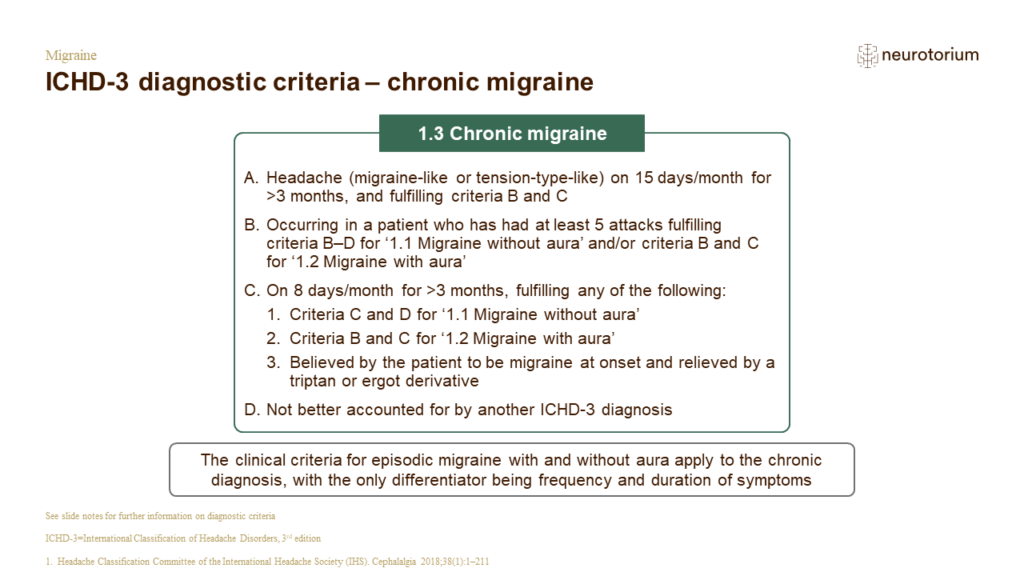
ICHD-3 diagnostic criteria – chronic migraine
1.3 Chronic migraine[IHS, 2018]
A. Headache (migraine-like or tension-type-likea) on 15 days/month for >3 months, and fulfilling criteria B and C.
B. Occurring in a patient who has had at least five attacks fulfilling criteria B–D for ‘1.1 Migraine without aura’ and/or crit…
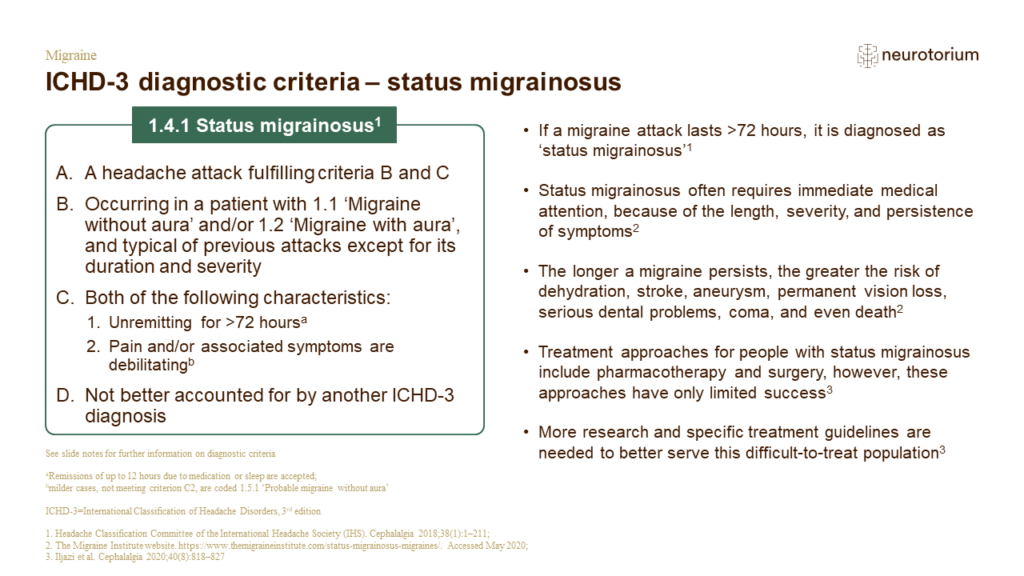
ICHD-3 diagnostic criteria – status migrainosus
1.4.1 Status migrainosus – a debilitating migraine attack lasting for more than 72 hours.[IHS, 2018]
A. A headache attack fulfilling criteria B and C.
B. Occurring in a patient with 1.1 ‘Migraine without aura’ and/or 1.2 ‘Migraine with aura’, and typical of previous attack…
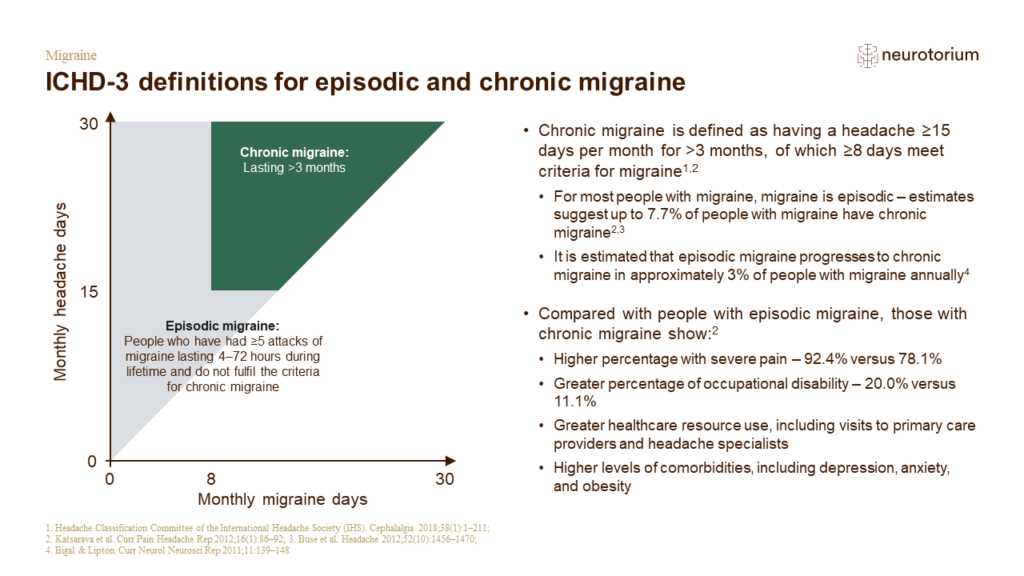
ICHD-3 definitions for episodic and chronic migraine
The distinction between episodic and chronic migraine is made when a person crosses a threshold of 15 monthly headache days, 8 of which meet the criteria for migraine.[IHS, 2018] The division between episodic and chronic is therefore based on the frequency of the migraine…
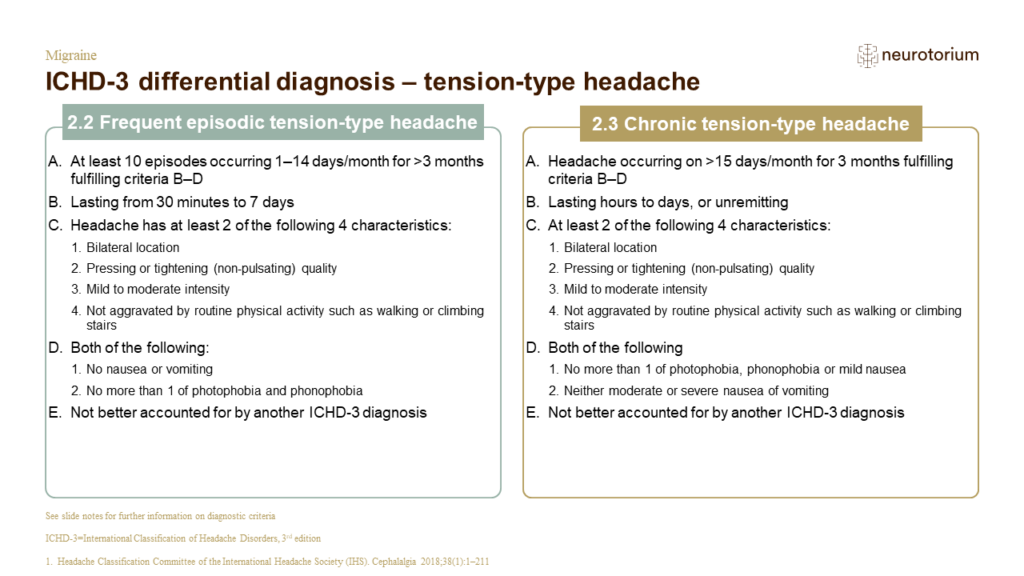
ICHD-3 differential diagnosis – tension-type headache
2.2 Frequent episodic tension-type headache[IHS, 2018]
A. At least 10 episodes of headache occurring on 1–14 days/month on average for >3 months (12 and <180 days/year) and fulfilling criteria B–D.
B. Lasting from 30 minutes to seven days.
C. At least two of the following f…
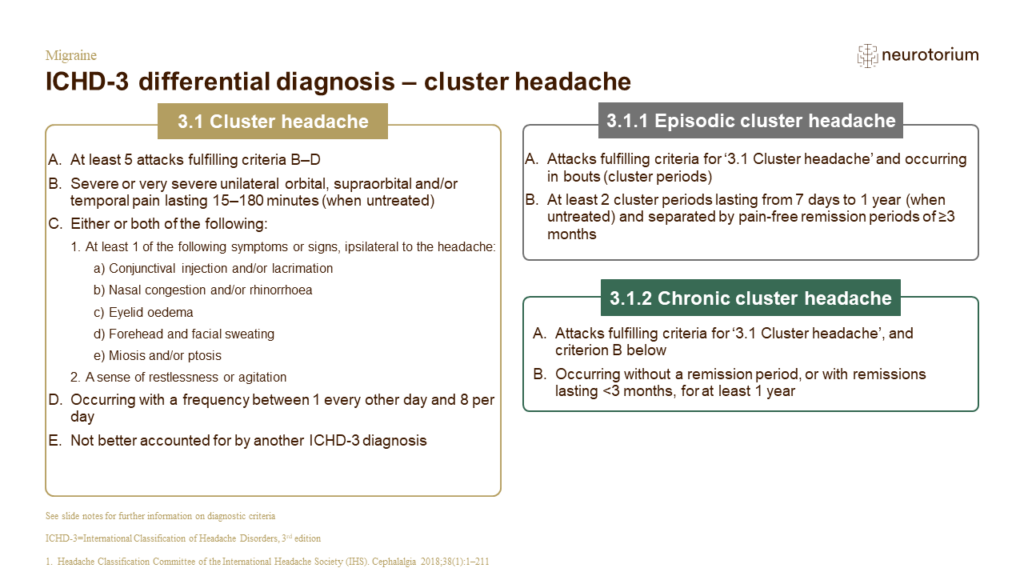
ICHD-3 differential diagnosis – cluster headache
3.1 Cluster headache – attacks of severe, strictly unilateral pain which is orbital, supraorbital, temporal or in any combination of these sites, lasting 15–180 minutes and occurring from once every other day to eight times a day. The pain is associated with ipsilateral c…
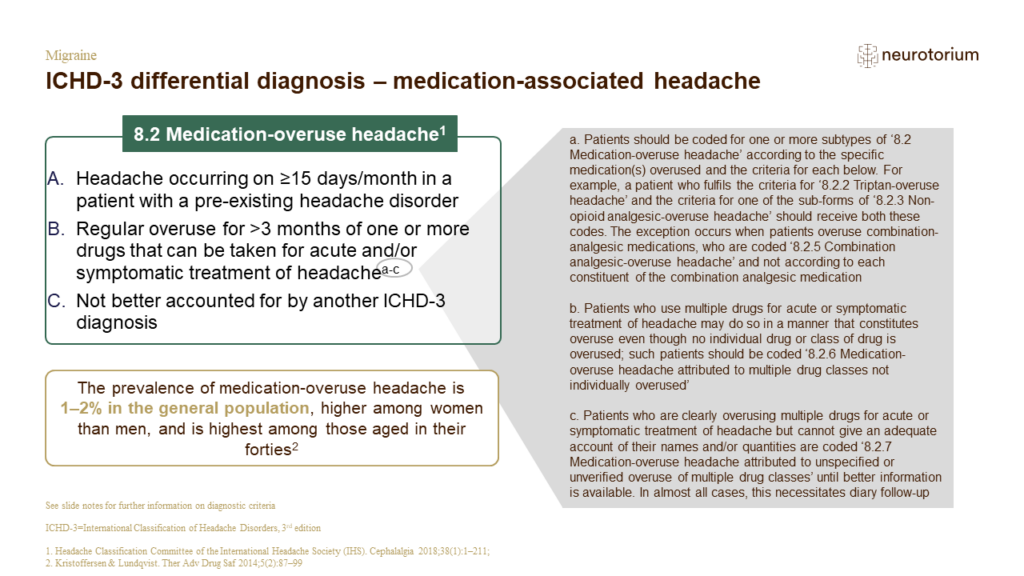
ICHD-3 differential diagnosis – medication-associated headache
8.2 Medication-overuse headache:[IHS, 2018]
A. Headache occurring on ≥15 days/month in a patient with a pre-existing headache disorder.
B. Regular overuse for >3 months of one or more drugs that can be taken for acute and/or symptomatic treatment of headache.a-c
C. Not bette…
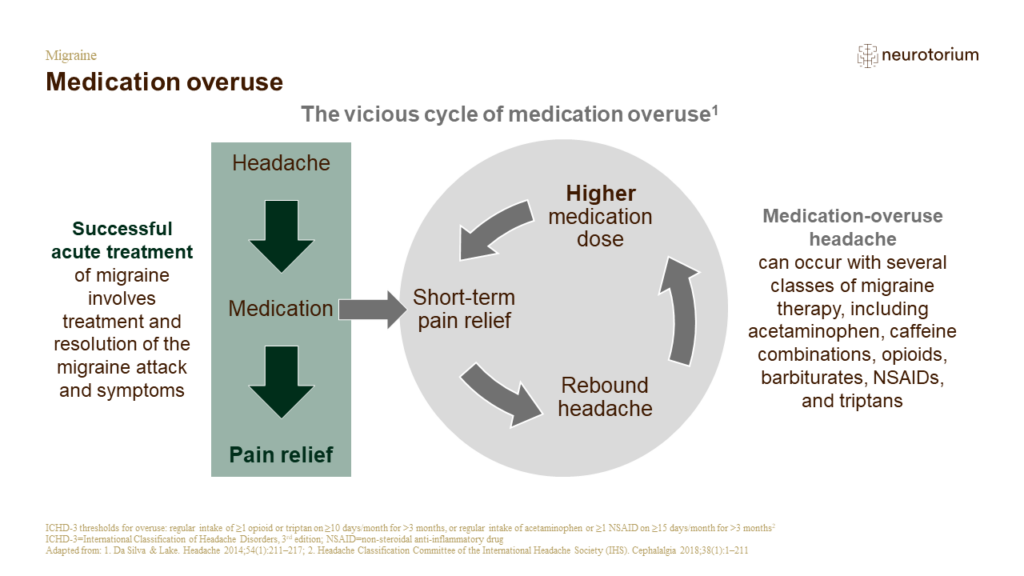
Medication overuse
Although not fully understood, the use of certain medications in certain individuals is thought to lead to structural and/or functional brain changes, altering their susceptibility to headaches and migraine.[Chong, 2020; Da Silva & Lake, 2014; Kocasoy Orhan, 2019] Over ti…



